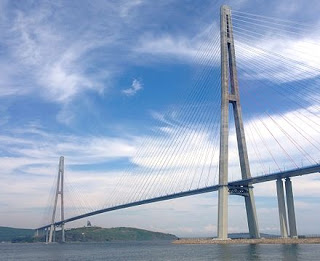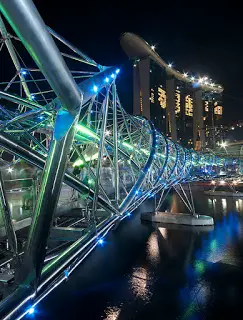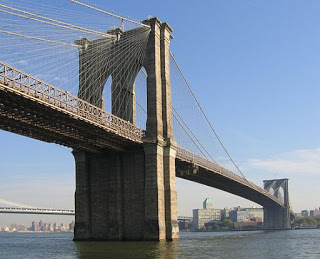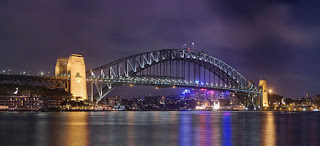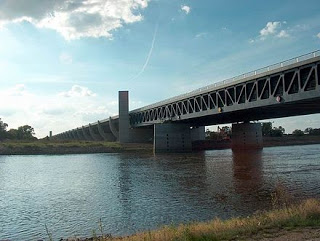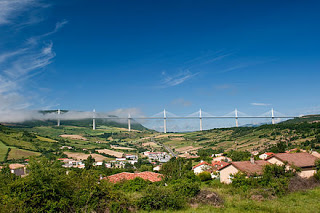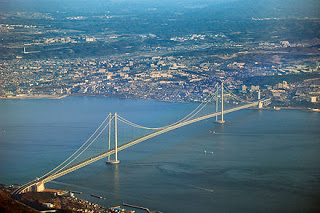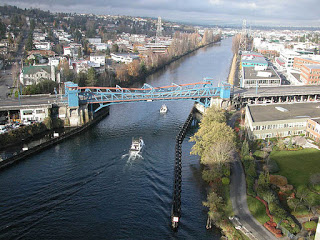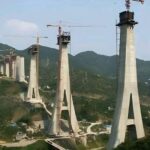In the world there are many iconic civil engineering structures but bridges are ahead of all due to its difficult construction sites and importance in the heart of the people.
Here are few bridges of the world that are one of their own kind.
Russky Bridge, Russia
The Russky Bridge (Russian: Русский мост – Russian Bridge) is a bridge built across the Eastern Bosphorus strait, to serve the Asia-Pacific Economic Cooperation conference that took place in Vladivostok in 2012. The bridge connects the mainland part of the city (Nazimov peninsula) with Russky Island, where the main activities of the summit took place. The bridge was completed in July 2012 and opened by Russian Prime Minister Dmitry Medvedev. On September 3, 2012, the bridge was officially given its name.
The Helix Bridge
The Helix Bridge, previously known as the Double Helix Bridge, is a pedestrian bridge linking Marina Centre with Marina South in the Marina Bay area in Singapore. It was officially opened on 24 April 2010 at 9 pm, however only half was opened due to ongoing construction at the Marina Bay Sands. It is located beside the Benjamin Sheares Bridge and is accompanied by a vehicular bridge, known as the Bayfront Bridge. The entire bridge was opened on 18 July 2010 to complete the entire walkway around Marina Bay.
Brooklyn Bridge
The Brooklyn Bridge is a hybrid cable-stayed/suspension bridge in New York City and is one of the oldest bridges of either type in the United States. Completed in 1883, it connects the boroughs of Manhattan and Brooklyn by spanning the East River. It has a main span of 1,595.5 feet (486.3 m), and was the first steel-wire suspension bridge constructed. It was originally referred to as the New York and Brooklyn Bridge and as the East River Bridge, but it was later dubbed the Brooklyn Bridge, a name coming from an earlier January 25, 1867, letter to the editor of the Brooklyn Daily Eagle, and formally so named by the city government in 1915. Since its opening, it has become an icon of New York City, and was designated a National Historic Landmark in 1964 and a National Historic Civil Engineering Landmark in 1972.
Sydney Harbour Bridge
The Sydney Harbour Bridge is a steel through arch bridge across Sydney Harbour that carries rail, vehicular, bicycle, and pedestrian traffic between the Sydney central business district (CBD) and the North Shore. The dramatic view of the bridge, the harbour, and the nearby Sydney Opera House is an iconic image of Sydney, and Australia. The bridge is nicknamed \”The Coathanger\” because of its arch-based design or is simply called \”the Bridge\” by Sydney residents.
Magdeburg Water Bridge
The Magdeburg Water Bridge (German: Kanalbrücke Magdeburg) is a large navigable aqueduct in central Germany, located near Magdeburg. The largest canal underbridge in Europe, it spans the river Elbe and directly connects the Mittellandkanal to the west and Elbe-Havel Canal to the east of the river, allowing large commercial ships to pass between the Rhineland and Berlin without having to descend into and then climb out of the Elbe itself.
Millau Viaduct Bridge
The Millau Viaduct (French: le Viaduc de Millau, IPA: [vjadyk də mijo]) is a cable-stayed bridge that spans the valley of the River Tarn near Millau in southern France.
Designed by the French structural engineer Michel Virlogeux and British architect Norman Foster, it is the tallest bridge in the world with one mast\’s summit at 343.0 metres (1,125 ft) above the base of the structure. It is the 15th highest bridge deck in the world, being 270 metres (890 ft) between the road deck and the ground below. The Millau Viaduct is part of the A75-A71 autoroute axis from Paris to Béziers and Montpellier. The cost of construction was approximately €400 million. It was formally inaugurated on 14 December 2004, and opened to traffic on 16 December. The bridge has been consistently ranked as one of the great engineering achievements of all time. The bridge received the 2006 International Association for Bridge and Structural Engineering Outstanding Structure Award.
Akashi Kaikyo Bridge
The Akashi Kaikyō Bridge (明石海峡大橋 Akashi Kaikyō Ō-hashi?) is a suspension bridge, which links the city of Kobe on the Japanese mainland of Honshu to Iwaya on Awaji Island. It crosses the busy Akashi Strait (Akashi Kaikyō in Japanese) as part of the Honshu-Shikoku Highway.
Since its completion in 1998, the bridge has had the longest central span of any suspension bridge in the world, at 1,991 metres (6,532 ft; 1.237 mi).
It is one of the key links of the Honshū-Shikoku Bridge Project, which created three routes across the Inland Sea.
Like Us on Facebook!
Fremont Bridge
The Fremont Bridge is a double-leaf bascule bridge that spans the Fremont Cut in Seattle, Washington. The bridge, which connects Fremont Avenue North and 4th Avenue North, connects the neighborhoods of Fremont and Queen Anne.
The Fremont Bridge was opened on Friday June 15, 1917, at a cost of $410,000. The first traffic over the bridge was to \”owl cars\”, the last run of the trolleys, and then after 5am the same day to all other traffic. The Lake Washington Ship Canal was dedicated on July 4, 1917, which has caused confusion about the opening date, for this bridge crosses the canal. The Fremont Bridge is the first of four city bascules to cross the canal, the others being Ballard Bridge (1917), University Bridge (1919), and Montlake Bridge (1925). The bridge was added to the National Register of Historic Places in 1982, and is also a designated city landmark, ID #110347.

